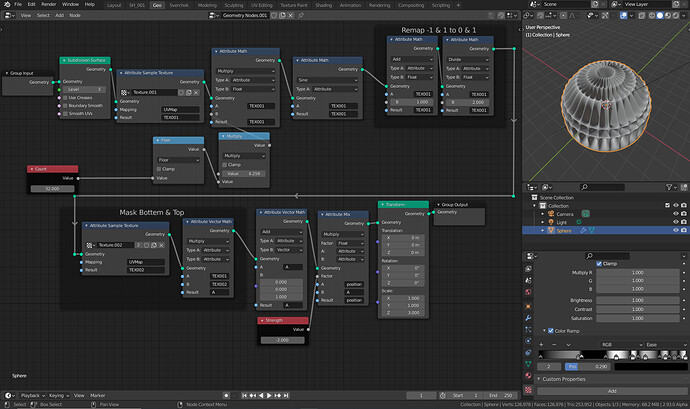I’m feeling bad for hijacking the thread about missing plugin UIs so I’m starting a new topic.
The most of the current plugins are pretty wasteful regarding the space they require. If you look at the example below, you see that the magenta tinted area isn’t really serving any purpose.

While this is ok in a small chain of a few pedals, it can easily get frustrating when you really want to use the capabilities of the MOD platform. There you are likely to deal with 10-20 pedals so you start scrolling, zooming and arranging a lot. But even if a signal chain is smaller, it can get messy on small screens like on mobile devices (The tool of choice when gigging)
In the other thread I suggested a different UI which is more focused on that purpose. For example have a look at these:
Bitwig (Grid)
Blender
Resolume Wire
There has been already a minimal mode suggested which is even more reduced to just the name and IO harnesses. I consider this too extreme because of several reasons:
- It’s hard to see what exactly is going on in a patch.
- Each adjustment will require at least two clicks, one on the node and another one on the actual parameter. This makes editing harder.
- It might encourage overly complex effects with too much parameters since there’s no visual boundary
If this is done carefully, I see the chance that plugin developers (or maybe just those who porting stuff)
have to bother less with UI design if they don’t want to while users don’t have to deal with those ugly tins anymore.
I also want to answer some of @James comments in the other thread.
First of all, this is actually already a problem with the current UI. In many cases, there are hidden parameters only accessible via a separate menu. Second, my aim would be providing a UI which is just more functional by neither hiding nor bloating anything.
In my opinion, most of the current plugins would need a redesign because it’s already out of hand.  I consider visual resemblance important as well. But have you actually done any UX surveys backing the claim that each plugin has to look like an actual piece of hardware?
I consider visual resemblance important as well. But have you actually done any UX surveys backing the claim that each plugin has to look like an actual piece of hardware?




